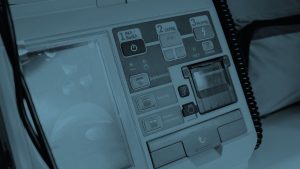
Evolution of the ECG Machine
An electrocardiogram or “ECG machine” is a device that helps physicians understand and interpret the electrical signals that are produced by the heart as it contracts. By doing so, they can diagnose potential heart issues.
Over the past few decades, there have been great advances in the field of medicine. One such area is cardiac care, where modern technologies have led to a better understanding and treatment of heart conditions. When it comes to heart health, the evolution of ECG machines has played a critical role for both doctors and patients alike.
The below article explores the ECG machine, its evolution, and what impact it had on cardiac care.
“ECG machines are now a staple in every hospital and medical clinic and is one of the most common tests requested by cardiologists for their patients.
1887-1930: The Early Days of ECGs
The first ECGs were rudimentary at best, but they laid the groundwork for the more advanced machines we have today. It was not until 1903 that Willem Einthoven, a Dutch physiologist invented the string galvanometer, which improved the accuracy of ECGs by measuring small electrical currents. This innovation earned Einthoven the Nobel Prize in Physiology or Medicine in 1924.
By the 1930’s, ECGs were being used routinely in hospitals to diagnose heart conditions like arrhythmias and myocardial infarctions (heart attacks). However, these early machines were large and bulky, making them difficult to transport from one location to another. Additionally, they required trained technicians to operate them, which limited their use outside of hospitals.
1930’s-1960’s: The Advent of Portable ECGs
In 1939, engineer Norman Jolliffe unveiled the first portable ECG machine, which weighed just 35 pounds (16 kg). This machine allowed doctors to more easily transport ECGs from one location to another and even administer them outside traditional hospital settings.
Other advances during this time included the development of self-adhesive electrodes and disposable paper ones, which made recording an ECG quicker and easier than ever before. By the 1960’s, beat-to-beat reporting became possible thanks to new technological advances, furthering the use of ECGs in identifying heart conditions. To make ECG machines more accessible and affordable, several modifications were made over the years. One of the most important modifications was the development of solid-state electronics in the 1950’s.
This replaced the need for string galvanometers with much smaller transistors—which made ECG machines smaller, lighter, and less expensive. The 1950’s saw the development of portable ECGs which allowed patients to be mobile while still monitoring their heart activity. In 1957, John Winters started marketing his own design of an ambulatory ECG called the “Dynamo Cardio scope.”
This machine increased the mobility of patients as well as allowed longer periods of monitoring. However, these ambulatory ECGs were large, bulky, and not very user-friendly, which made them impractical for widespread use. In 1975 World Heal Corporation released their own version called the “Mini Mitter” or “Holter Monitor,” which was much smaller and lighter weight. The Holter monitor became the industry standard for ambulatory ECGs and is still used today in many hospitals around the world.
1970’s-Present: Modern Developments in ECG Technology
The 1970’s saw several important developments in ECG technology, including the introduction of digital readouts and computerized analysis. These advances made it possible for non-specialists to operate ECG machines and led to increased accuracy in diagnosis.
ECG machines continued to evolve throughout the second half of the 20th century. In recent years, digital technology has been used to create compact, handheld devices that can be easily transported from one location to another. Some modern ECG machines can be wirelessly connected to smartphones and other devices so that patients can receive real-time monitoring. Eventually, technology continued to miniaturize further until we arrived at wearable devices such as smartwatches that are now capable of performing Single Lead ECG.
Some of the latest innovations in ECG technology include ultra-portable ECG devices that measure the equivalent of a 12 Lead ECG, without leads, just by touch with the help of artificial intelligence (AI)-based software that can automatically interpret ECGs with high accuracy.
The evolution of ECG machines has played a crucial role in diagnostic medicine by allowing doctors to better understand and interpret the electrical signals produced by heart contraction. ECG machines have come a long way since they were first invented over 100 years ago. They are now smaller, more portable, and easier to use than ever before. This continuous evolution has made them an invaluable tool for diagnosing cardiac conditions. It is evident that there will be more advancement coming our way. As technology becomes more sophisticated, who knows what else the next 100 years hold!”
The Evolution Of ECG Machines – BW Healthcare (businessworld.in)






